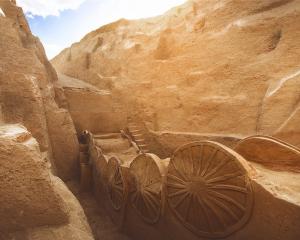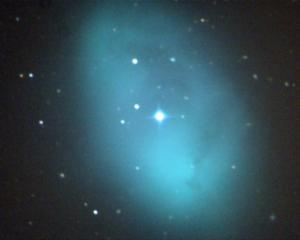

One day I was summoned by my professor to assist in an unheard of undertaking. An Oxford scientist had joined the team with a new device, known as a proton magnetometer. It comprised a bottle, a lot of wires and a screen to receive electronic signals.
My job was to hold the bottle and move it along at regular intervals while the scientist, Martin Aitken, pressed buttons. The objective was to penetrate the ground and identify disturbances that could be mapped and interpreted. At the time, this device was unheard of. I was involved in its launch.
When the results were processed, we had, amazingly, mapped an early Roman defensive ditch that ran right through the middle of the city, possibly dug in a hurry on the news that a ferocious army under Queen Boudicca was approaching.
This discovery had faded from my mind until recently I received, out of the blue, a photograph of me holding that bottle, and I decided to find out what has been happening at Verulamium of late.
The news came as a big surprise, for another technique of penetrating and mapping what lies hidden underground is being used. This new geophysical survey is rapidly extending over the entire interior of the city, which lay behind a circuit of stone walls.
Now we can see the layout of the streets, houses, kilns and walls. The centre of the city had the forum, and a theatre that flanked a large temple. The grid pattern of streets divides the city into sections, each with fine houses with their hypocausts, bath complexes and mosaic floors in the centre thinning out as one reaches the periphery against the walls.
On the latest plan, our early enclosure ditch appears crystal clear as the dark straight line that turns at a right angle on its western edge. We did not take any readings when it passed under the St Alban’s first XI cricket pitch for fear of the groundsman’s wrath. A sinuous dark line is the aqueduct that leads to the theatre.
When we worked there, we uncovered a wonderful mosaic floor with a lion in the middle. There must be many more deep underground awaiting discovery.












